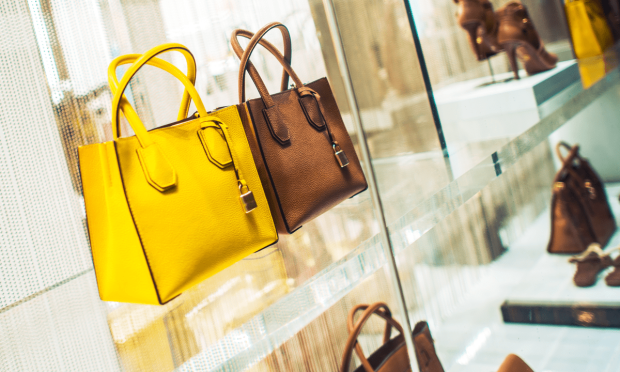Bain Study: COVID Batters Luxury Goods Sales, Sparks Innovation

While the ongoing COVID-19 pandemic has hit the luxury goods market hard, it has also spurred underlying change in the business, according to a new study by Bain & Co.
The market for high-end personal goods has plunged 23 percent since 2019 to EUR217 billion, the study found. That’s the first major contraction of the market since 2009, Bain said.
But the pandemic has also hastened certain business transformations. Online sales of luxury goods, for example, surged from 12 percent to 23 percent, year over year. Consumers are also increasingly seeking out goods associated with diversity, inclusion, and sustainability, said Bain.
The Bain study was conducted with Fondazione Altagamma, an Italian luxury goods industry group.
According to Bain, Q2 2020 was the worst quarter the luxury goods sector has ever endured. But a light has emerged at the end of the tunnel, with Q4 sales expected to be down only 10 percent year over year.
For 2021, Bain sees the sector growing between 10 percent and 19 percent, depending on how the pandemic evolves and global travel rebounds. Operating revenues, which dropped 60 percent year over year in 2020, should also be on the rebound. Bain sees businesses recovering about 50 percent of their 2020 profit loss in 2021. Sales are expected to return to 2019 levels by late 2022 or early 2023.
Sales were hardest hit in Europe, down 36 percent to EUR57 billion this year, while sales in the Americas fell 27 percent to EUR62 billion. Certain Asian nations also saw steep declines. Japan’s luxury spending slid 24 percent to EUR18 billion, while combined sales in Hong Kong and Macau tumbled 35 percent to EUR27 billion.
One notable exception to the gloom and doom has been mainland China, which saw luxury sales jump by 45 percent this year to EUR44 billion.
A recent Bloomberg study showed luxury goods are making a comeback in retail, as seen through results from Tiffany & Co. and Movado, as well as promising signs from the category’s biggest market: China.
“The pent-up demand from nearly two months of lockdown between February-March likely led local shoppers to purchase more aspirational brands than mass brands,” said Catherine Lim, a Singapore-based Bloomberg Intelligence analyst. “Consumers are definitely looking to treat themselves following the scare from the outbreak.”
Online sales have also sparkled. Bain said that online sales of luxury items rose to EUR49 billion, up from EUR33 billion last year, with sales climbing to 23 percent of overall spend in 2020. Bain predicts that online shopping will become the leading channel for the luxury goods industry by 2025.
The luxury jewelry business has also seen signs of revival. Sector experts say customers have taken a renewed interest in jewelry stores since the pandemic, arranging to visit jewelers for repairs and buying presents for special occasions.
Other luxury goods categories have not fared as well. Bain reported that sales of sneakers, for example fell 12 percent in 2020, while clothing and watch sales tumbled 30 percent. In addition, apparel makers continued to see demand for social media-promoted, direct-to-consumer brands.
